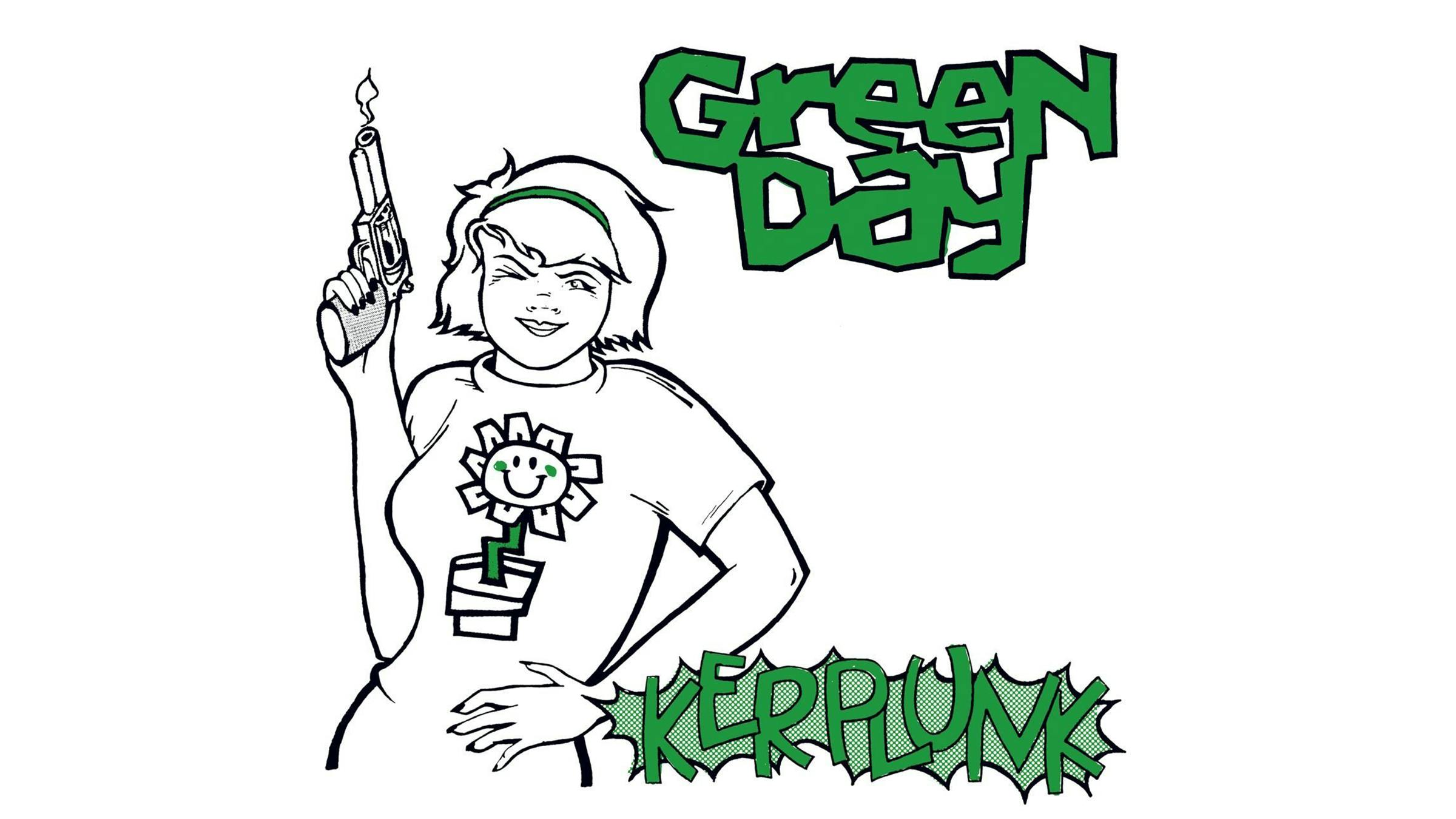On December 17, 1991, Green Day were presented with vinyl copies of their second album, Kerplunk. On this chilly winter’s evening, the band were appearing at the Joiners Arms in Southampton, an event that quickly became an impromptu album release party at which the musicians wore all of the clothes and wigs they’d accumulated during their first overseas tour, and which culminated with Billie Joe Armstrong falling off the stage.
By this point Green Day had been in Europe for almost two months. The band travelled in a van that caught fire en route to snowbound gigs at which four people had paid entry. One night they slept in a storeroom alongside a human head in a jar of formaldehyde. On another, their place of rest was a venue in Copenhagen in which a couple noisily had sex on the stage. In Germany, they had a gun pulled on them. In Wigan, the trio staged a nativity play that featured the Easter Bunny and Santa Claus, and in which Tré Cool played the role of baby Jesus. Days later, the three Californians spent Christmas Day in a squat in Bath taking magic mushrooms and inhaling the smoke from pot that had been placed on hot knives. By the tour’s end, Billie Joe Armstrong had spent so much time in Germany that his speech had slowed and he had lost much of his Californian accent. Conditions were so squalid that the frontman contracted body lice and was required to shave every hair from his body.
“When we got to Europe we didn’t know anything,” says the frontman. “We were, like, ‘Sure, let’s book some shows in Europe!’ But when we got there, suddenly we were nervous. Some of those shows were scary. We were in a situation where a band on tour has to lose their minds and be able to find each other to try and make life make sense again. That’s why people quit, because they start losing their minds. We felt like we were a bunch of clowns in a small car. It was great.”
The records that Green Day held in their hands in Southampton were brought to them by Larry Livermore. At Heathrow, the Lookout! boss employed the technique of talking until the listener loses the will to live in order to convince a Customs and Excise officer that the albums he was ferrying into the UK were intended only as gifts. As he exited the airport, he had no idea that the music he was carrying would be the last the band would record for his label.
